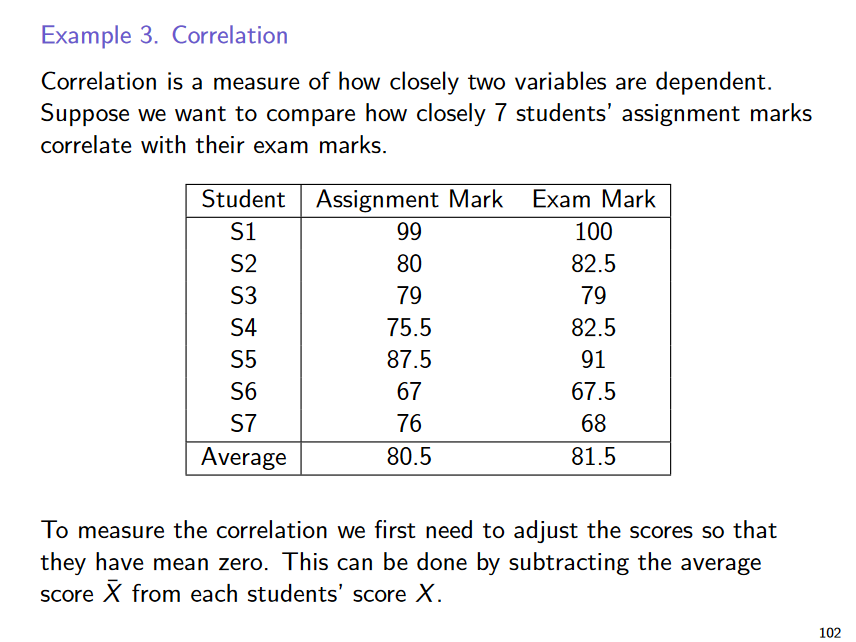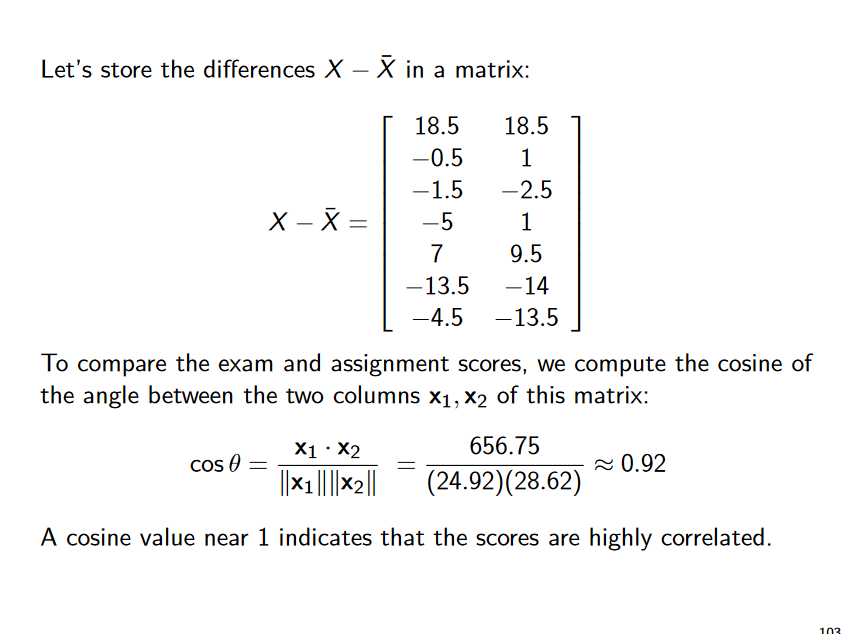The dot product, also called scalar product, and rarely, the Euclidean inner product is an operation that can be performed on Vectors to return a scalar/real number. It can also be used to check if vectors are parallel or perpendicular.
The dot product can only be applied if both vectors are tuples of the same size.
Definition
Formula
- , = Two vectors dimensions (i.e. they belong to ):
- = The angle between and
Matrix Formula
- = The associated column matrices of and
Properties
Let and let (a scalar). Then:
- The dot product of two vectors returns a scalar:$$\vec{u} \cdot \vec{v} \in \mathbb{R}
2. **Commutative**: The order of vectors in a dot product can be reversed: $$\vec{u} \cdot \vec{v} = \vec{v} \cdot \vec{u}
- Distributive: Dot products can be expanded:$$(\vec{u} + \vec{v})\cdot \vec{w} = \vec{u}\cdot \vec{w} + \vec{v}\cdot \vec{w}
(\vec{u} + \vec{v})\cdot \vec{w} \neq \vec{u}\cdot(\vec{v} + \vec{w}) \ \ \ \ \ \ \ \ \ \ \ \vec{u}\cdot(\vec{v} + \vec{w}) = \vec{u}\cdot \vec{v} + \vec{u}\cdot \vec{w}
6. **Obeys scalar multiplication**: We can 'pull out' the scalar from a dot product operation:$$(k\vec{u})\cdot \vec{v} = \vec{u}\cdot(k\vec{v})= k(\vec{u} \cdot \vec{v})
- The dot product of a vector with itself returns it’s magnitude squared:$$\vec{u}\cdot \vec{u} = \lvert\lvert \vec{u} \rvert\rvert
8. **Orthogonality**: The dot product of two vectors is zero if they are [perpendicular](Vector.md#Perpendicular) or orthogonal:$$\vec{u}\cdot \vec{v} = 0 \leftrightarrow \vec{u} \perp \vec{v}

